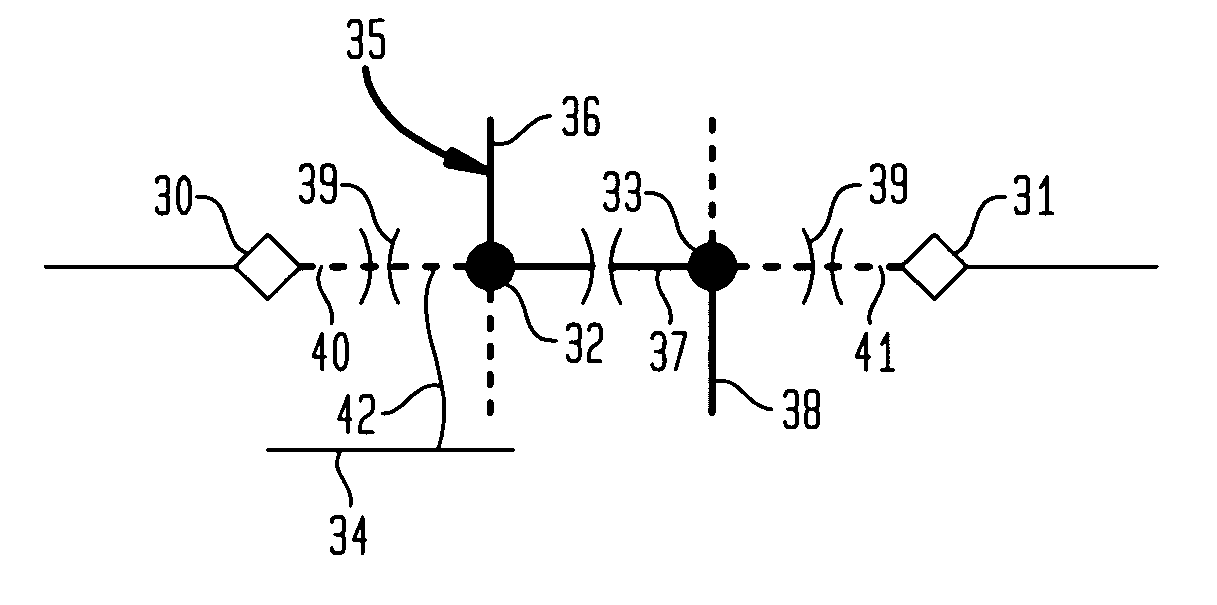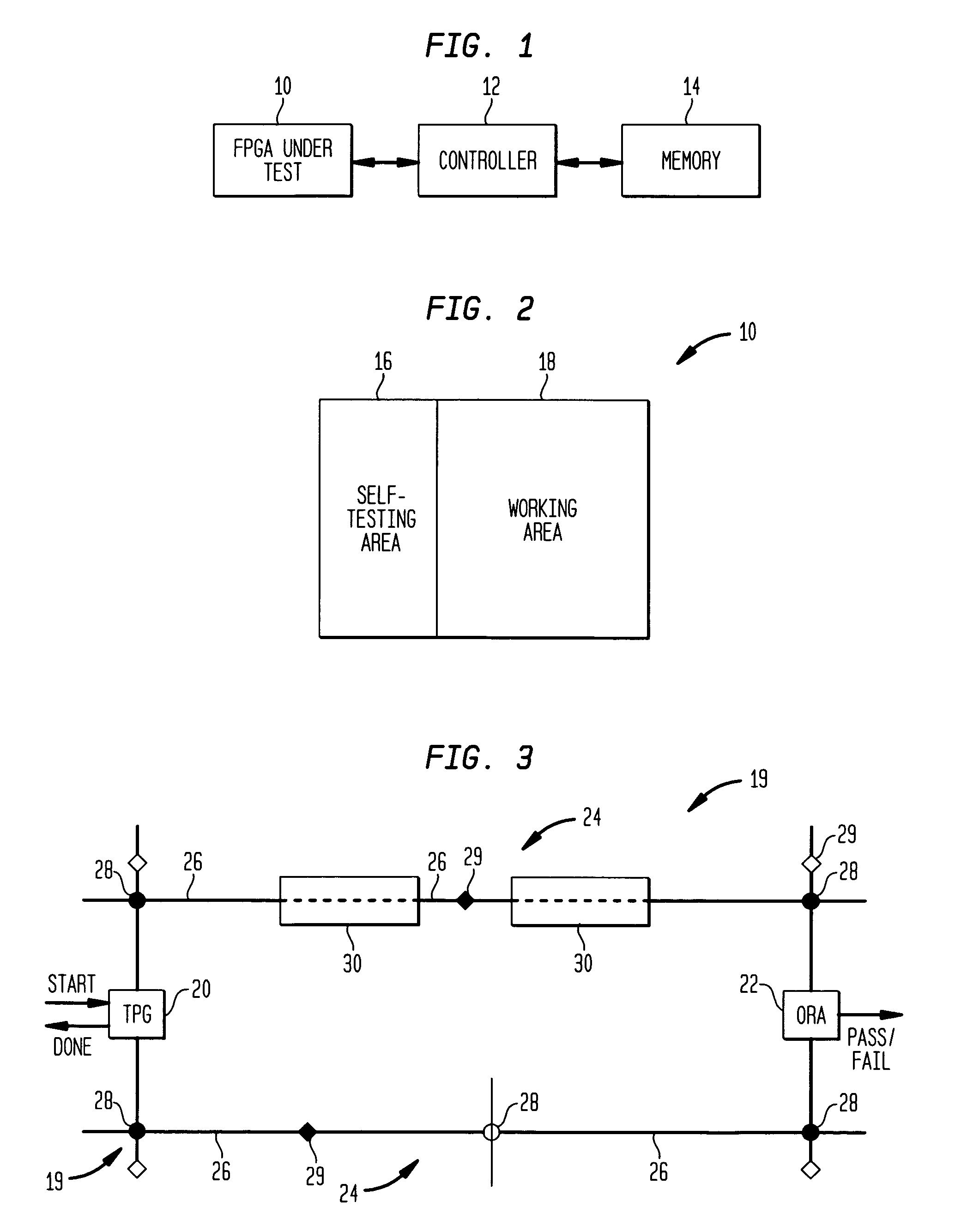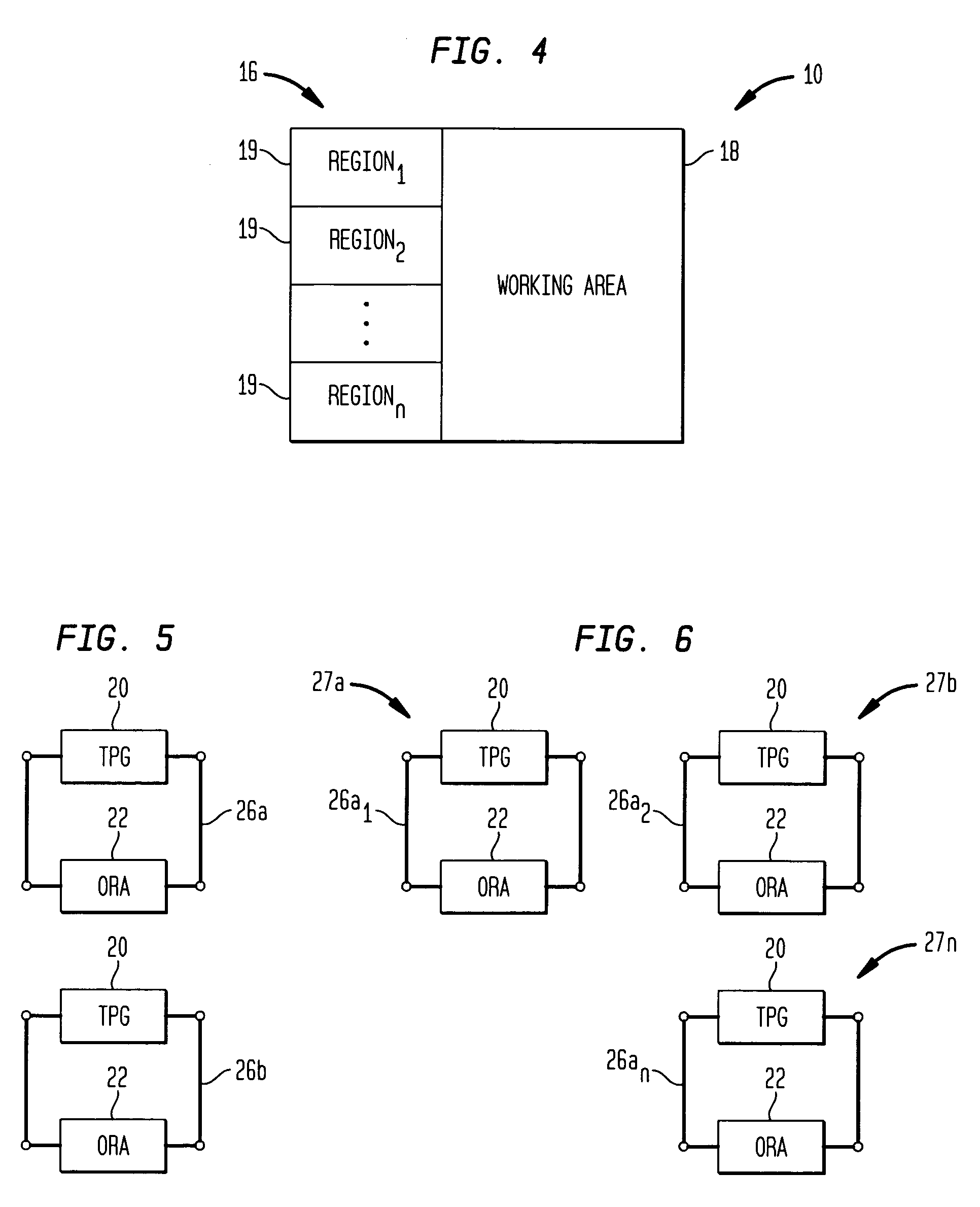Fault tolerant operation of field programmable gate arrays
a field programmable gate array and fault-tolerant technology, applied in fault response, pulse technique, instruments, etc., can solve the problem of hindering the identification of single resources as being faulty, and achieve the effect of prolonging the life of critical missions and extending the useful life of the system
- Summary
- Abstract
- Description
- Claims
- Application Information
AI Technical Summary
Benefits of technology
Problems solved by technology
Method used
Image
Examples
Embodiment Construction
[0040]A typical field programmable gate array (FPGA) generally consists of a plurality of resources including an array of programmable logic blocks (PLBs) interconnected by a programmable interconnect network, and programmable input / output cells or boundary scan ports (most FPGAs feature a boundary-scan mechanism). Such structures are, for example, featured in Lattice Semiconductor Corporation's ORCA Series FPGAs, in the Xilinx VIRTEX Series FPGAs, and in the Altera FLEX 8000 logic devices. In accordance with the present inventive method, programmable interconnect resources which make up the interconnect network of an FPGA under test 10 are tested for faults and faulty interconnect resources identified in order to determine whether the faults are compatible with the intended operation of the FPGA under test 10 or whether reconfiguration of the FPGA under test 10 during normal on-line operation is required.
[0041]As shown in schematic block diagram in FIG. 1, the present method of fau...
PUM
 Login to View More
Login to View More Abstract
Description
Claims
Application Information
 Login to View More
Login to View More - R&D
- Intellectual Property
- Life Sciences
- Materials
- Tech Scout
- Unparalleled Data Quality
- Higher Quality Content
- 60% Fewer Hallucinations
Browse by: Latest US Patents, China's latest patents, Technical Efficacy Thesaurus, Application Domain, Technology Topic, Popular Technical Reports.
© 2025 PatSnap. All rights reserved.Legal|Privacy policy|Modern Slavery Act Transparency Statement|Sitemap|About US| Contact US: help@patsnap.com



